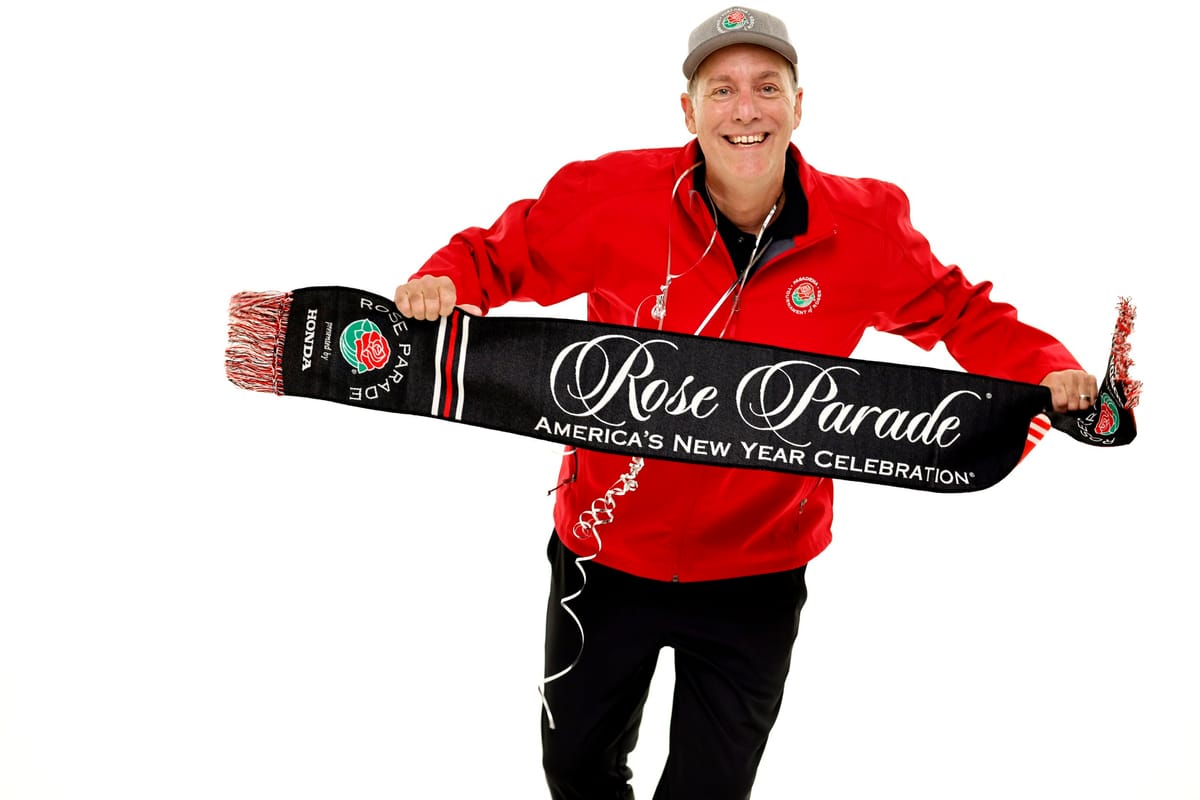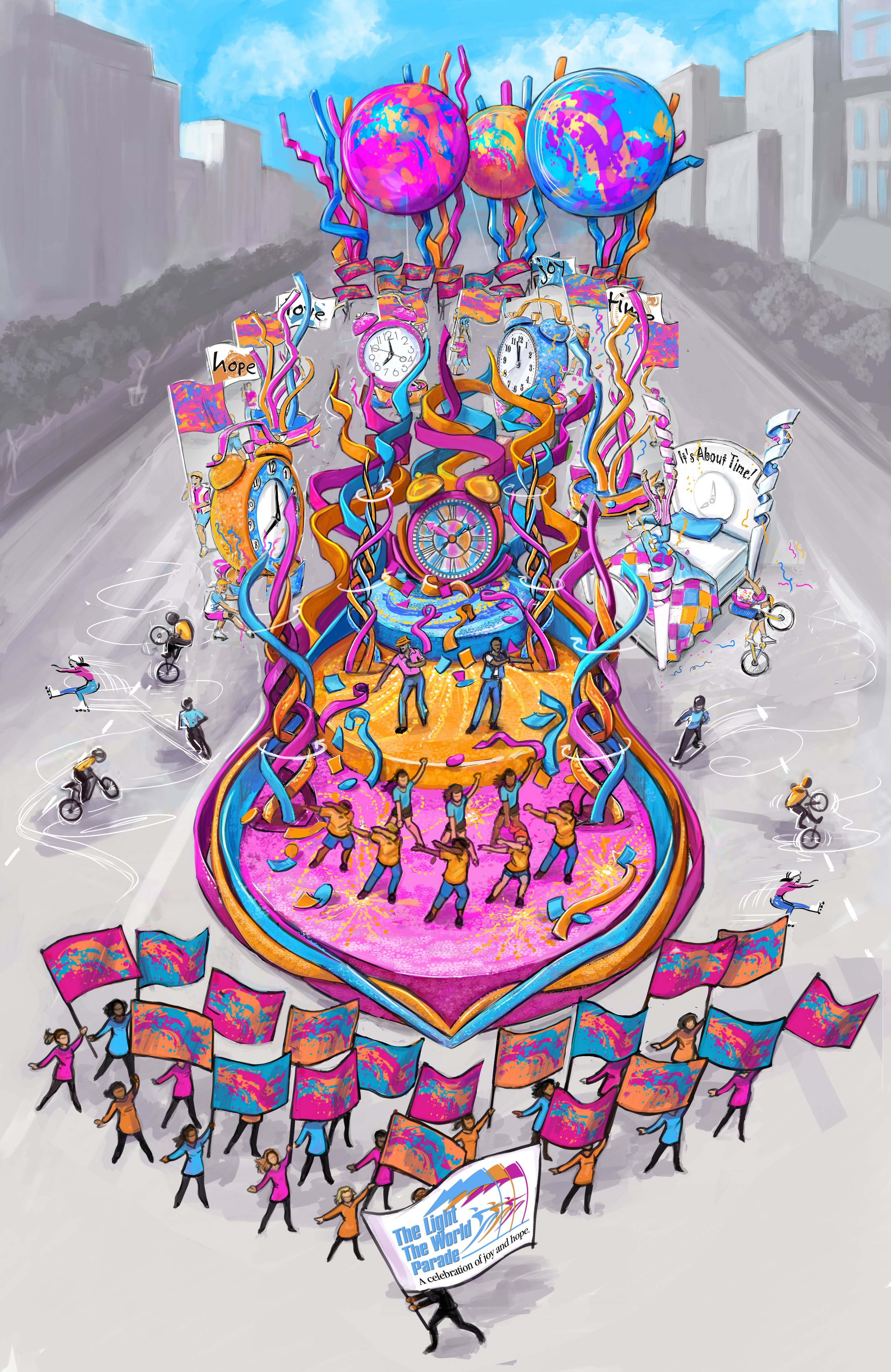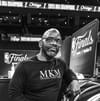
Ed James thinks big. The Oklahoma native literally created a company called “Think Big Stuff,” which helps companies make their events larger and grander. However, even James couldn’t have imagined the journey he would take that would lead him to try improving society by simply making people smile. That is what happened when James created the “Light the World Parade.”
“The whole idea of having this other little pet project with Light the World Parade is my way of getting other young people into their creativity,” James says. “But also giving them that piece of, ‘Hey, if you just do this for yourself, you’re going to end up feeling very empty at the end of the road. Where this has wheels is when you take your fame and turn it into something where you’re replicating good.’”
The Light the World Parade can be described as a completely portable brand-ready parade with a message of joy and hope. With a cast of hundreds, it includes dancers, gymnasts, cheerleaders, skateboarders, puppeteers and several other disciplines — specialists in high-end creative performing arts and visual pageantry that can pack up and travel to any destination around the globe.
“We network with existing non-profit organizations, corporate brands and special events of all kinds to accomplish our give-back initiatives,” James says.
It was a concept he had more than two decades ago while on a trip to the Middle East with his business partners.
“We were tossing around the idea when we were in Israel about doing this portable parade thing,” James says. “I said, ‘I think I have an idea of how we can mobilize youth and young adults to give back big and bring a positive message for the future, and do something that can actually help them use their gifts to connect it to philanthropic activities — and we can get them to learn to serve others.’”
Despite James’ propensity for turning his simple notions into big actions, he did nothing with the idea. It just sat in the back of his mind until the tragedy of the Sept. 11, 2001, attacks shook it loose. Two weeks later, he wanted to do something to help his country through its grief.
“My ex-wife and I were trying to protect our kids from seeing what was going on TV,” James says. “You could feel the heaviness on our nation in that period of time. And I was like, ‘How can we move forward as a nation if we don’t have something for the kids to look forward to?’

That is when the Light the World Parade reemerged as a possibility — and James quickly called his partners, who included Matt and Dawn Davidson and Mark Neubauer.
“We had to give this generation a vision for the future. A celebration of the joy that is filled with unapproachable light and possibility,” James says. “A future that we, in part, choose by our own actions. An effort to connect again with people: hurting people, healing people and people needing a hand up to love. It’s a message we didn’t create ourselves. It was given to us long ago to steward in centuries of the past, and with an origin that requires us all to have faith.”
It took two years for James to take his idea from a simple concept to an actual game plan. His first major show was the 2004 Athens Olympics.
“I worked with young people who flew in from all over the world and we rehearsed for five or six days in an empty parking lot in a warehouse about 30 minutes from downtown,” James says. “We did our show, and the next morning our host got a phone call from the mayor of Athens, who said, ‘Where did you get these people? We’re paying $18 an hour and we can’t get our people to smile. I need you to ask them to come over to the Olympic village and perform several times this week.’”
It was the first time James saw his vision play out in real life. “When we were done performing, I had the cast go out and meet the audience, all of them,” he says. “Couples were sitting on benches and their eyes were full of tears. They said, ‘We’ve never seen anything like this before.’ It was that moment I thought, ‘Oh my goodness, we’ve got something really special here because it connects to people.’”
Since then, the Light the World Parade has appeared at the MegaFest in Atlanta, the Cotton Bowl Parade, Christmas at Opry Mills and three separate times in the Chick-fil-A Peach
Bowl Parade. It was also a candidate for the 2008 Beijing Olympic Games and the 2012 London Olympic Games. In 2014, James also worked on the Rose Bowl float to help honor the life of Josiah Berger, who donated his entire body to Donate Life, saving seven lives and helping more than 80 others with his donation.




However, in 2015 the parade went dormant as James went into the lab. It was time to reimagine the parade as technology and tastes changed. Except for a couple of small venue shows, James has kept the parade off the market while he came up with an entirely new presentation — one that was going to be bigger and even more entertaining.
“We are very excited about the design we have created next year, for the 2024 Rose Parade,” James says. “Tim Estes of Fiesta Floats Studio has been working with me over the past eight years on this design and the relaunch of the Light The World Parade, with a live performance built right into the design. That’s what I’ve been doing now for eight years, is bringing the show to the next level. We’re bringing animation and costume design, color guard, drum line, all that stuff out at one time.”
James is currently taking donations and looking for a naming partner to be part of the journey.
However, the biggest mission for James and his wife Migdalia is to bring the parade to Oklahoma City and make it an annual event in which people from around the state can take part. He wants to tie it to an Oklahoma foundation that helps nonprofits … and knows it will take the right sponsors willing to think big enough to make it happen.
“I feel really fortunate that I have something that’s a passion of mine that doesn’t make sense,” James says. “It’s like there’s a portion of faith that it takes to actually do it because you don’t know how to do it all by yourself. I’m hoping that that launch actually happens here in Oklahoma City and it will become its home. It will be just something that Oklahoma can give to other people around the country.”

